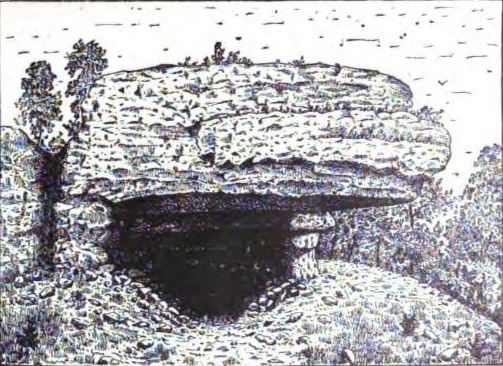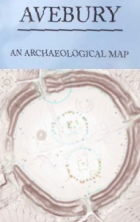<< Other Photo Pages >> Grotte du Placard - Cave or Rock Shelter in France in Poitou:Charente (16)
Submitted by TheCaptain on Saturday, 16 April 2005 Page Views: 6922
Natural PlacesSite Name: Grotte du Placard Alternative Name: Grotte de RochebertierCountry: France
NOTE: This site is 5.456 km away from the location you searched for.
Département: Poitou:Charente (16) Type: Cave or Rock Shelter
Nearest Town: Angoulême Nearest Village: Vilhonneur
Latitude: 45.689722N Longitude: 0.419722E
Condition:
| 5 | Perfect |
| 4 | Almost Perfect |
| 3 | Reasonable but with some damage |
| 2 | Ruined but still recognisable as an ancient site |
| 1 | Pretty much destroyed, possibly visible as crop marks |
| 0 | No data. |
| -1 | Completely destroyed |
| 5 | Superb |
| 4 | Good |
| 3 | Ordinary |
| 2 | Not Good |
| 1 | Awful |
| 0 | No data. |
| 5 | Can be driven to, probably with disabled access |
| 4 | Short walk on a footpath |
| 3 | Requiring a bit more of a walk |
| 2 | A long walk |
| 1 | In the middle of nowhere, a nightmare to find |
| 0 | No data. |
| 5 | co-ordinates taken by GPS or official recorded co-ordinates |
| 4 | co-ordinates scaled from a detailed map |
| 3 | co-ordinates scaled from a bad map |
| 2 | co-ordinates of the nearest village |
| 1 | co-ordinates of the nearest town |
| 0 | no data |
Be the first person to rate this site - see the 'Contribute!' box in the right hand menu.
Internal Links:
External Links:
I have visited· I would like to visit
pixlink visited on 23rd Jul 2013 - their rating: Cond: 5 Amb: 5 Access: 4 open on weekends in summer months with guided tours given by working archaeologists. Well worth the trouble to visit. Visitor interpretation centre with 10 minute film in French, a display of artifacts found and context information, then you are taken into the cave in small groups to see the rock art itself. Very detailed site with panoramic photos of the cave http://www.encharente.com/vilhonneur-grotte-du-placard/
Location Source: Geohack Wikipedia
You may be viewing yesterday's version of this page. To see the most up to date information please register for a free account.



Do not use the above information on other web sites or publications without permission of the contributor.
Click here to see more info for this site
Nearby sites
Click here to view sites on an interactive map of the areaKey: Red: member's photo, Blue: 3rd party photo, Yellow: other image, Green: no photo - please go there and take one, Grey: site destroyed
Download sites to:
KML (Google Earth)
GPX (GPS waypoints)
CSV (Garmin/Navman)
CSV (Excel)
To unlock full downloads you need to sign up as a Contributory Member. Otherwise downloads are limited to 50 sites.
Turn off the page maps and other distractions
Nearby sites listing. In the following links * = Image available
645m S 170° Grotte de Vilhonneur Cave or Rock Shelter
3.0km SE 137° Grotte de la Chaise* Cave or Rock Shelter
4.6km ESE 123° Grotte de Montgaudier* Cave or Rock Shelter
4.8km ESE 105° Grotte de Fontechevade Cave or Rock Shelter
8.8km SSE 158° Dolmens du Bancheraud Burial Chamber or Dolmen
14.0km NW 311° Pierre Ceinturee* Standing Stone (Menhir)
14.6km SSW 209° Le Roc De Sers* Cave or Rock Shelter
15.0km S 184° Dolmen de Charras Burial Chamber or Dolmen
15.8km SE 128° La Pierre Plate (Teyjat)* Burial Chamber or Dolmen
16.4km SW 235° Dolmen de Pierre Levade Burial Chamber or Dolmen
16.7km SE 134° Grotte de la Mairie* Cave or Rock Shelter
17.0km SW 218° Dolmen de l'Etang Burial Chamber or Dolmen
17.1km W 280° La Combe Burial Chamber or Dolmen
18.5km SW 226° Dolmen de Brande Burial Chamber or Dolmen
18.5km ENE 59° Dolmen de Tauzat* Burial Chamber or Dolmen
19.8km ESE 113° Menhir de Fixard* Standing Stone (Menhir)
21.3km SSW 193° Dolmen de Lambertie* Burial Chamber or Dolmen
22.0km SSW 192° Dolmen de la Gélie* Burial Chamber or Dolmen
22.1km SSW 192° Menhir de la Pierre Debout (Édon) Standing Stone (Menhir)
22.5km SSW 206° La Quina* Cave or Rock Shelter
23.0km SSW 193° Nécropole d'Edon Barrow Cemetery
23.0km SSW 206° Le Champignon* Natural Stone / Erratic / Other Natural Feature
23.3km SE 127° La Chapoulie* Standing Stones
23.7km NW 314° Menhir des Chaumes de Fayolle* Standing Stone (Menhir)
24.7km NW 325° Dolmen des Grandes-Chaumes* Burial Chamber or Dolmen
View more nearby sites and additional images






 We would like to know more about this location. Please feel free to add a brief description and any relevant information in your own language.
We would like to know more about this location. Please feel free to add a brief description and any relevant information in your own language. Wir möchten mehr über diese Stätte erfahren. Bitte zögern Sie nicht, eine kurze Beschreibung und relevante Informationen in Deutsch hinzuzufügen.
Wir möchten mehr über diese Stätte erfahren. Bitte zögern Sie nicht, eine kurze Beschreibung und relevante Informationen in Deutsch hinzuzufügen. Nous aimerions en savoir encore un peu sur les lieux. S'il vous plaît n'hesitez pas à ajouter une courte description et tous les renseignements pertinents dans votre propre langue.
Nous aimerions en savoir encore un peu sur les lieux. S'il vous plaît n'hesitez pas à ajouter une courte description et tous les renseignements pertinents dans votre propre langue. Quisieramos informarnos un poco más de las lugares. No dude en añadir una breve descripción y otros datos relevantes en su propio idioma.
Quisieramos informarnos un poco más de las lugares. No dude en añadir una breve descripción y otros datos relevantes en su propio idioma.